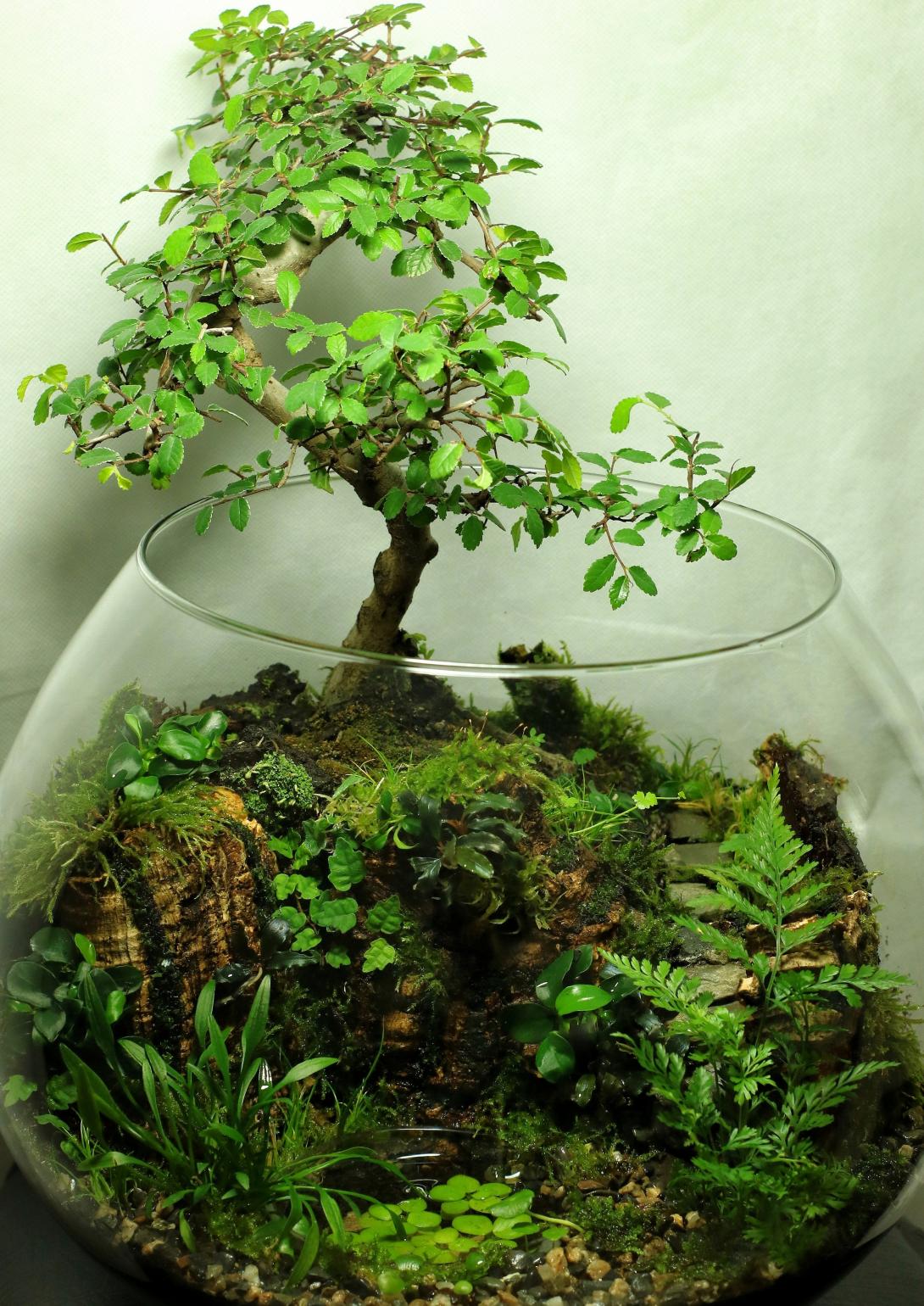
Markus
Lemke
Substrate
Plants
Filter
none
Lightpower
2 x 3 Watt
Lightduration
10.00 hours
CO2
none
Fertilizer
pH
6.50
KH + GH
2
Maintenance routine
For fertilization, DOOA Wabikus Mist is evenly sprayed every 3 days. To maintain an even and sufficient level of moisture, daily spraying with destilled water is recommended. If being on vaccation, the terrarium can be covered with clear foil. I did not apply regular pruning, since I purposely choose slow growing plants for this layout. The only plant that needs trimming from time to time is Hydrocotyle verticilata due to its fast growth. The glass gets cleaned from time to time with pincettes and a peace of kitchen towel.
Water in the pond gets replaced from time to time.
Water in the pond gets replaced from time to time.
Description
"The Ancient Tree" is supposed to represent a piece of Japanese garden culture, combining classical elements of this centuries old art in an Open Terrarium. Zen Gardening was always about harmony, inner peace and relaxation of the mind. This 13l tiny world creates the illusion of an ancient garden, overgrown, wild and natural but yet groomed and inviting. The terrarium is supposed to arouse curiosity, the small pond in the foreground is the first focus point for the eye, while the stone slabs lead up to an ancient bonsai tree, casting its soft shadow above the whole garden. When watching the scenery closer on second view, many details will become visible, telling from the long life of this hidden oasis and inviting the viewer to study the garden from all angels. Since it holds only 13 litre, it is designed as a desktop terrarium to encourage the viewer to continously stay connected with nature during working or being indoors and to have a closer look from time to time to feel like being in a Japanese garden, with all the structures&textures, noises and smells and tamed yet wild nature. This will relax and calm the mind and make it easier to focus on the living moment.
Since Iam a big fan of Japanese Zen Gardens and the master craft of Bonsai keeping, I was trying to create a Japanese garden as tribute to this beautiful culture. Classical elements like a pond, a stone path and an Ulmus parvifolia bonsai were incorporated to live up to the motto.
The biggest challenge in open terrarium builds like this is to maintain a sufficient level of moisture for the cultivation of emersed aquatic plants. Therefore, I did not use stone but cork as hardscape, to increase the moisture retention. If chosen carefully, it easily creates the illusion of old and weathered stones. Lots of Spaghnum Moss mixed with Aqua Soil was used as substrate for planting the sensitive plants and to further increase the moisture level. Tree bark from a forest in Germany was used aswell. By using Hygrolon, a geotextile fabric, as base layer beneath the emersed aquatic mosses, sufficient moisture retention is ensured.
Since Iam a big fan of Japanese Zen Gardens and the master craft of Bonsai keeping, I was trying to create a Japanese garden as tribute to this beautiful culture. Classical elements like a pond, a stone path and an Ulmus parvifolia bonsai were incorporated to live up to the motto.
The biggest challenge in open terrarium builds like this is to maintain a sufficient level of moisture for the cultivation of emersed aquatic plants. Therefore, I did not use stone but cork as hardscape, to increase the moisture retention. If chosen carefully, it easily creates the illusion of old and weathered stones. Lots of Spaghnum Moss mixed with Aqua Soil was used as substrate for planting the sensitive plants and to further increase the moisture level. Tree bark from a forest in Germany was used aswell. By using Hygrolon, a geotextile fabric, as base layer beneath the emersed aquatic mosses, sufficient moisture retention is ensured.
